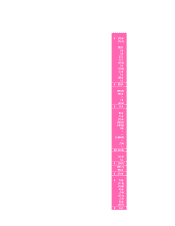Red Lobster 2016 Annual Report Download - page 42
Download and view the complete annual report
Please find page 42 of the 2016 Red Lobster annual report below. You can navigate through the pages in the report by either clicking on the pages listed below, or by using the keyword search tool below to find specific information within the annual report.
NOTES TO CONSOLIDATED FINANCIAL STATEMENTS
DARDEN
38
NOTE 7
DEBT
The components of long-term debt are as follows:
May 29, May 31,
(in millions)
2016 2015
Variable-rate term loan (1.68% at May 31, 2015)
due August 2017 $ — $ 285.0
6.200% senior notes due October 2017 — 500.0
4.500% senior notes due October 2021 — 121.9
3.350% senior notes due November 2022 — 111.1
4.520% senior notes due August 2024 — 10.0
6.000% senior notes due August 2035 150.0 150.0
6.800% senior notes due October 2037 300.0 300.0
Total long-term debt $450.0 $1,478.0
Fair value hedge — 3.6
Less unamortized discount and issuance costs (10.0) (14.3)
Total long-term debt less unamortized discount
and issuance costs $440.0 $1,467.3
Less current portion — (15.0)
Long-term debt, excluding current portion $440.0 $1,452.3
During fiscal 2016, utilizing the proceeds of the Four Corners cash
dividend, cash proceeds from the sale-leasebacks of restaurant properties
and our corporate headquarters and additional cash on hand, we retired
approximately $1.03 billion aggregate principal of long-term debt consisting of:
• $285.0 million of our variable-rate term loan, maturing in
August 2017;
• $500.0 million of unsecured 6.200 percent senior notes due in
October 2017;
• $121.9 million of unsecured 4.500 percent senior notes due in
October 2021;
• $111.1 million of unsecured 3.350 percent senior notes due in
November 2022; and
• $10.0 million of unsecured 4.520 percent senior notes due in
August 2024.
During fiscal 2016, we recorded approximately $106.8 million
associated with the fiscal 2016 retirements including cash costs of approxi-
mately $68.7 million for repurchase premiums, make-whole amounts and
hedge settlements and non-cash charges of approximately $38.1 million
associated with hedge and loan cost write-offs. These amounts were recorded
in interest, net, in our consolidated statements of earnings.
The interest rate on our $300.0 million 6.800 percent senior notes due
October 2037 is subject to adjustment from time to time if the debt rating
assigned to such series of notes is downgraded below a certain rating level
(or subsequently upgraded). The maximum adjustment is 2.000 percent
above the initial interest rate and the interest rate cannot be reduced below
the initial interest rate. In October 2014, Moody’s Investors Service (Moody’s)
downgraded our senior unsecured ratings to “Ba1” from “Baa3” resulting
in an increase of 0.250 percent in the interest rates on our senior notes due
in October 2037. In April 2016, Moody’s subsequently upgraded our rating
to “Baa3” and the interest rate was restored to the initial rate.
The aggregate contractual maturities of long-term debt for each of the
five fiscal years subsequent to May 29, 2016, and thereafter are as follows:
(in millions)
Fiscal Year 2017 2018 2019 2020 2021 Thereafter
Debt repayments $ — $ — $ — $ — $ — $450.0
We maintain a $750.0 million revolving Credit Agreement (Revolving
Credit Agreement), with Bank of America, N.A. (BOA) as administrative agent,
and the lenders and other agents party thereto. The Revolving Credit
Agreement is a senior unsecured credit commitment to the Company and
contains customary representations and affirmative and negative covenants
(including limitations on liens and subsidiary debt and a maximum con-
solidated lease adjusted total debt to total capitalization ratio of 0.75 to 1.00)
and events of default usual for credit facilities of this type. As of May 29,
2016, we were in compliance with all covenants under the Revolving
Credit Agreement.
The Revolving Credit Agreement matures on October 24, 2018, and
the proceeds may be used for commercial paper back-up, working capital
and capital expenditures, the refinancing of certain indebtedness, certain
acquisitions and general corporate purposes. Loans under the Revolving
Credit Agreement bear interest at a rate of LIBOR plus a margin determined
by reference to a ratings-based pricing grid (Applicable Margin), or the base
rate (which is defined as the highest of the BOA prime rate, the Federal
Funds rate plus 0.500 percent and the Eurocurrency Rate plus 1.00 percent)
plus the Applicable Margin. Assuming a “BBB” equivalent credit rating
level, the Applicable Margin under the Revolving Credit Agreement will be
1.100 percent for LIBOR loans and 0.100 percent for base rate loans.
As of May 29, 2016, we had no outstanding balances under the Revolving
Credit Agreement.
NOTE 8
DERIVATIVE INSTRUMENTS AND HEDGING ACTIVITIES
We use financial derivatives to manage interest rate and equity-based
compensation risks inherent in our business operations. By using these
instruments, we expose ourselves, from time to time, to credit risk and
market risk. Credit risk is the failure of the counterparty to perform under the
terms of the derivative contract. When the fair value of a derivative contract
is positive, the counterparty owes us, which creates credit risk for us. We
minimize this credit risk by entering into transactions with high-quality
counterparties. We currently do not have any provisions in our agreements
with counterparties that would require either party to hold or post collateral in
the event that the market value of the related derivative instrument exceeds
a certain limit. As such, the maximum amount of loss due to counterparty
credit risk we would incur at May 29, 2016, if counterparties to the derivative
instruments failed completely to perform, would approximate the values of
derivative instruments currently recognized as assets on our consolidated
balance sheet. Market risk is the adverse effect on the value of a financial
instrument that results from a change in interest rates, commodity prices
or the market price of our common stock. We minimize this market risk
by establishing and monitoring parameters that limit the types and degree
of market risk that may be undertaken.
























